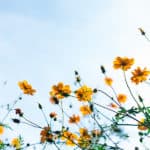Reposted from Indian Country Today, “The Wampanoag Side of the First Thanksgiving” was written by Michelle Tirado on November 23rd, 2011.
From the Native perspective: The true story of Thanksgiving
Too often the story of the 1621 Thanksgiving is told from the Pilgrims’ point of view, and when the Wampanoag, who partook in this feast too, are included, it is usually in a brief or distorted way. In search of the Native American perspective, we looked to Plymouth, where the official first Thanksgiving took place and where today the Wampanoag side of the story can be found.
Plimoth Plantation is one of Plymouth’s top attractions and probably the place to go for the first Thanksgiving story. It is a living museum, with its replica 17th century Wampanoag Homesite, a representation of the homesite used by Hobbamock, who served as emissary between the Wampanoag and Pilgrims, and staffed by 23 Native Americans, mostly Wampanoag; 17th century English Village; and the Mayflower II, a replica of the ship that brought the Pilgrims to Plymouth.
According to a Plimoth Plantation timeline, the Mayflower arrived at Plymouth Harbor on December 16, 1620. The Pilgrims settled in an area that was once Patuxet, a Wampanoag village abandoned four years prior after a deadly outbreak of a plague, brought by European traders who first appeared in the area in 1616. The museum’s literature tells that before 1616, the Wampanoag numbered 50,000 to 100,000, occupying 69 villages scattered throughout southeastern Massachusetts and eastern Rhode Island. The plague, however, killed thousands, up to two-thirds, of them. Many also had been captured and sold as slaves.
And yet, when the Wampanoag watched the Mayflower’s passengers come ashore at Patuxet, they did not see them as a threat. “The Wampanoag had seen many ships before,” explained Tim Turner, Cherokee, manager of Plimoth Plantation’s Wampanoag Homesite and co-owner of Native Plymouth Tours. “They had seen traders and fishermen, but they had not seen women and children before. In the Wampanoag ways, they never would have brought their women and children into harm. So, they saw them as a peaceful people for that reason.”
But they did not greet them right away either. The English, in fact, did not see the Wampanoag that first winter at all, according to Turner. “They saw shadows,” he said. Samoset, a Monhegan from Maine, came to the village on March 16, 1621. The next day, he returned with Tisquantum (Squanto), a Wampanoag who befriended and helped the English that spring, showing them how to plant corn, fish and gather berries and nuts. That March, the Pilgrims entered into a treaty of mutual protection with Ousamequin (Massasoit), the Pokanoket Wampanoag leader.
Turner said what most people do not know about the first Thanksgiving is that the Wampanoag and Pilgrims did not sit down for a big turkey dinner and it was not an event that the Wampanoag knew about or were invited to in advance. In September/October 1621, the Pilgrims had just harvested their first crops, and they had a good yield. They “sent four men on fowling,” which comes from the one paragraph account by Pilgrim Edward Winslow, one of only two historical sources of this famous harvest feast. Winslow also stated, “we exercised our arms.” “Most historians believe what happened was Massasoit got word that there was a tremendous amount of gun fire coming from the Pilgrim village,” Turner said. “So he thought they were being attacked and he was going to bear aid.”
When the Wampanoag showed up, they were invited to join the Pilgrims in their feast, but there was not enough food to feed the chief and his 90 warriors. “He [Massasoit] sends his men out, and they bring back five deer, which they present to the chief of the English town [William Bradford]. So, there is this whole ceremonial gift-giving, as well. When you give it as a gift, it is more than just food,” said Kathleen Wall, a Colonial Foodways Culinarian at Plimoth Plantation.
The harvest feast lasted for three days. What did they eat? Venison, of course, and Wall said, “Not just a lovely roasted joint of venison, but all the parts of the deer were on the table in who knows how many sorts of ways.” Was there turkey? “Fowl” is mentioned in Winslow’s account, which puts turkey on Wall’s list of possibilities. She also said there probably would have been a variety of seafood and water fowl along with maize bread, pumpkin and other squashes. “It was nothing at all like a modern Thanksgiving,” she said.
While today Thanksgiving is one of our nation’s favorite holidays, it has a far different meaning for many Wampanoag, who now number between 4,000 and 5,000. Turner said, “For the most part, Thanksgiving itself is a day of mourning for Native people, not just Wampanoag people.”
At noon on every Thanksgiving Day, hundreds of Native people from around the country gather at Cole’s Hill, which overlooks Plymouth Rock, for the National Day of Mourning. It is an annual tradition started in 1970, when Wampanoag Wamsutta (Frank) James was invited by the Commonwealth of Massachusetts to give a speech at an event celebrating the 350th anniversary of the Pilgrims’ arrival and then disinvited after the event organizers discovered his speech was one of outrage over the “atrocities” and “broken promises” his people endured.
On the Wampanoag welcoming and having friendly relations with the Pilgrims, James wrote in his undelivered speech: “This action by Massasoit was perhaps our biggest mistake. We, the Wampanoag, welcomed you, the white man, with open arms, little knowing that it was the beginning of the end.”







